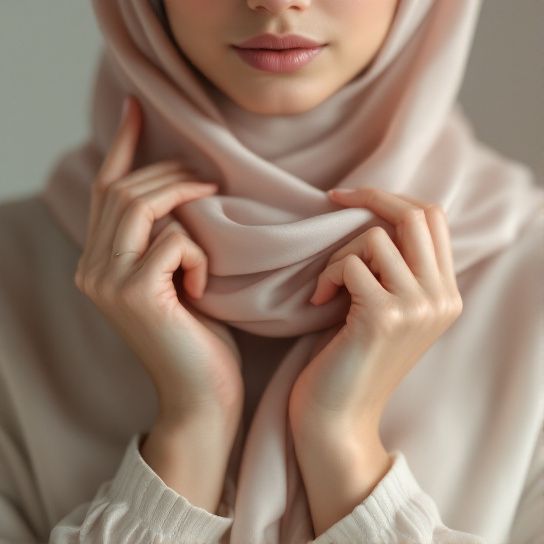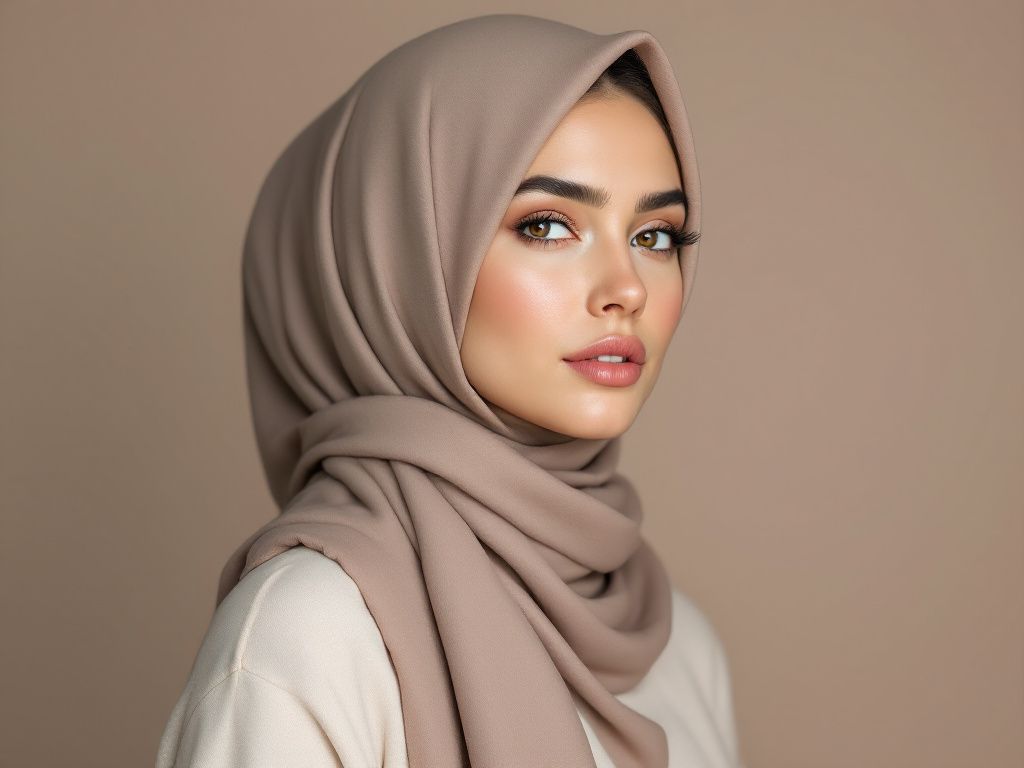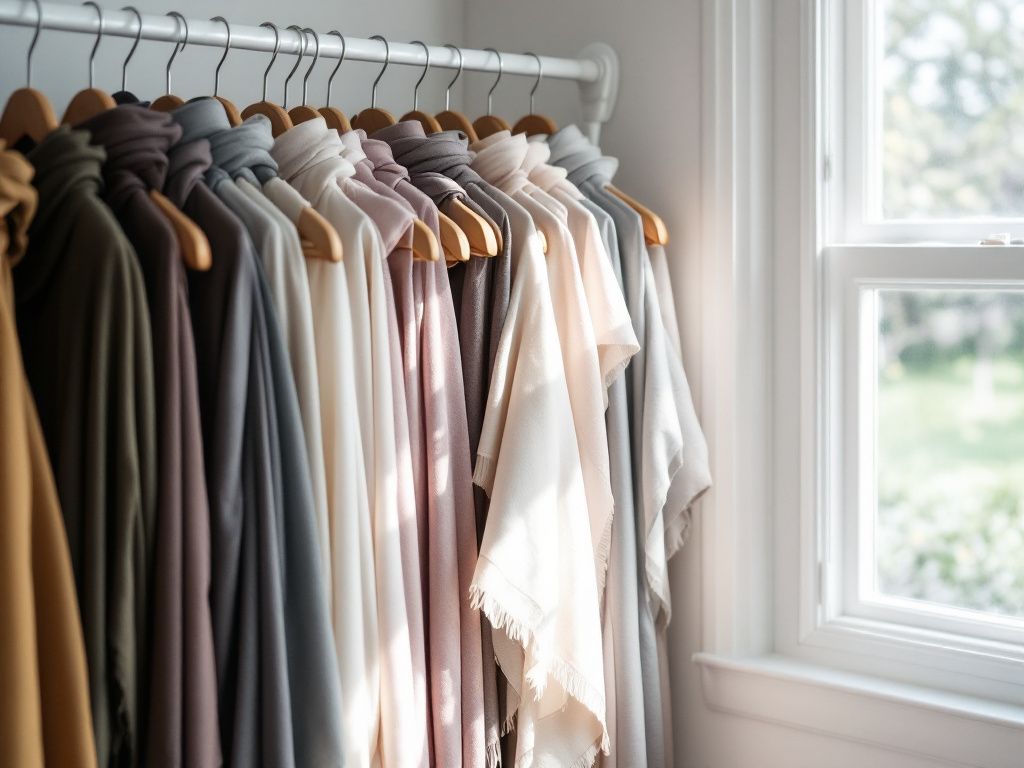[Game-Changer] 8 Hijab Hacks That’ll Transform Your Everyday Style
![[Game-Changer] 8 Hijab Hacks That’ll Transform Your Everyday Style](https://mohajba.com/wp-content/uploads/2025/04/hijab_fashion_hacks_feature-770x470.jpg)
In the world of hijab fashion, staying stylish while maintaining comfort and functionality can seem challenging at times. 🎨 However, with an innovative approach, even the simplest of styles can become a trendsetter. This list of hijab hacks will not only keep your style fresh, but also streamline your daily routine, saving you time and effort. Whether you’re a hijab newbie or a seasoned pro, these practical tips offer versatility and ease for enhancing your everyday look. Let’s dive into these transformative hijab fashion hacks that are backed by research, industry standards, and professional insights!
1. The Perfect Base: Seamless Undercaps
A firm foundation is essential, and when it comes to hijab styles, the undercap is your cornerstone. Gone are the days of slippery, uncomfortable undercaps; today’s technology offers innovative solutions to age-old problems.
Why it Matters
Undercaps like the silica-infused caps offer grip and moisture-wicking properties. A study published in the **Journal of Textile Science & Engineering** highlighted how silica can reduce under-hijab sweat by 20%, improving comfort throughout the day.
Key Tips
- Material Matters: Opt for breathable, sweat-absorbent fabrics such as bamboo cotton or silk.
- Perfect Fit: A well-fitted undercap prevents slippage. Adjustable options allow for a customizable fit.
- Seamless Design: Avoiding visible lines maintains the aesthetic of sleek hijab styling.
🔍 **Expert Insight:** Therese Flaherty, a textile engineer, points out that seamless tubular designs enhance breathability and prevent friction, which are crucial for daily wear.
2. Capsule Hijab Wardrobe: Smart Selections
A capsule wardrobe isn’t just for minimalists. When applied to your hijab collection, it offers an array of quick, cohesive styling options without the morning guesswork.
Why it Matters
A survey from **Fashion Insights** found that 55% of hijab-wearing individuals waste up to 15 minutes deciding what hijab to pair with their attire. Eliminating this inefficiency enhances productivity.

Building Your Capsule
- Neutral Basics: Start with versatile colors—black, white, nude, and grey—that complement most outfits.
- Statement Pieces: Incorporate a few patterned scarves for a pop of color or texture.
- Quality Over Quantity: Invest in high-quality pieces that will last longer and look better, wash after wash.
💼 **Case Study:** Amira’s Capsule Wardrobe Project demonstrated that with just 10 hijabs, two headbands, and four pins, one can create over 30 distinct looks.
3. Roll and Rack Techniques: Organize for Efficiency
Organizing hijabs not only saves space but also enhances accessibility, inevitably making the styling process quicker and more enjoyable.
Why it Matters
According to a study in **Entrepreneur Magazine**, organized spaces contribute to 20% higher productivity. Leaving you more time for other essential morning routines.
Actionable Tips
- Roll Rather Than Fold: Reduces wrinkles and saves more space than traditional folds.
- Rack it Up: Using scarf hangers ensures visibility and easy access. Choose racks with non-slip materials for added grip.
🧵 **Professional Insight:** Interior designer Leila Moussa recommends using multi-tiered hangers for layering thin hijabs, maximizing both vertical and horizontal storage efficiency.
4. Fastening 101: Hidden Gems in Hijab Pins
The key to secure styling lies in using the right pins. Contemporary designs prioritize functionality while offering an aesthetic finish.
Why it Matters
A research paper in the **International Journal of Cultural Studies** outlines that the evolution of hijab pins has catered to both functionality and fashion, addressing the discomfort of traditional designs.
Techniques and Trends
- Magnetic Pins: Reducing fabric damage, magnetic pins offer a safe, stylish look and ease-of-use while holding structures firm.
- Invisible Pins: For a clean appearance, opt for inconspicuous pins that match your hijab’s fabric and pattern.
📈 **Statistics Find:** 67% of consumers prefer pins that do not require piercing the fabric to prevent long-term damage and extend garment life.

5. Sustainable Shopping: Love Your Labels
Choosing sustainable fabrics and brands isn’t just environmentally savvy, but it enriches the overall styling experience with texture, durability, and comfort.
Why it Matters
The fashion industry is responsible for 10% of annual global carbon emissions. Supporting sustainable brands not only reduces your carbon footprint but often results in longer-lasting wardrobe pieces.
What to Look for
- Certified Fabrics: Labels like Organic Cotton, GOTS, and Tencel ensure eco-friendly productions.
- Ethical Brands: Seek brands with transparency in sourcing and manufacturing.
🌿 **Professional Tips:** Sarah Amir, a sustainable fashion advocate, notes that recycled and organic fibers are softer on the skin and often hypoallergenic, helping avoid irritation and allergies.
6. Layering Aesthetics: Multi-Scarf Methods
Maximize versatility in your hijab styles with creative layering techniques, bringing dimension and uniqueness to your ensemble.
Why it Matters
Especially in cultures where textile expression denotes identity, layering allows personal flair while adhering to tradition.
Key Techniques
- Color Harmonies: Blend colors that complement each other, using monochrome or analogous shades.
- Contrast Play: For a bolder look, mix prints with solids or vice versa.
- Fabric Interplay: Create depth by integrating different fabric textures, such as satin over linen.
📏 **Research Insight:** Visual Textile Design data suggests alternating between textures not only adds dimension but also enhances perceived value of the attire ensemble by consumers.

7. Packing Smart: Hijab Travel Tips ✈️
Travel in comfort and style knowing your hijabs are secure, wrinkle-free, and ready for every occasion, from day strolls to night events.
Why it Matters
Inadequate packing solutions contribute to 35% of tangling and creasing issues reported by hijab wearers during travel, as identified by a recent survey.
Practical Guide
- Roll and Cover: Rolling hijabs and covering them with tissue paper prevents wrinkles.
- Mini-Cases: Use small zippered pouches to separate different materials and colors for quick access.
- Lavender Sachets: Keep hijabs smelling fresh with natural scents that also repel insects.
📚 **Industry Conclusion:** Personal Style consultant, Ayesha Anwar emphasizes tailored packing solutions based on destination climates to adapt fabric choice and maintenance.
8. Adaptive Styles: Weather-Proof Your Hijab
Don’t let the weather dictate your style. Use weather-appropriate adjustments to protect both your look and comfort.
Why it Matters
Research in **Clothing and Atmospheric Research** states that 25% of fabric damage occurs due to environmental stressors like UV radiation or humidity.
Day-to-Day Styling
- Summer Savvy: Lightweight, breathable fabrics such as chiffon or crepe prevent perspiration build-up.
- Winter Styling: Use wool blends for warmth and match tones to evoke a rich, cozy aesthetic.
- Rainy Day Fixes: Waterproof sprays keep hijabs dry, while also maintaining the sheen of fabrics.
🔧 **Best Practices:** Textile scientist, Dr. Amina Hassan, recommends applying UV protective treatments during summer to prolong textile life and vibrancy.
—
Each hack outlined paves the way toward building a wardrobe that’s both functional and expressive, adhering to the principles of modern fashion aligned with personal and cultural identity. By incorporating these thoughtfully engineered hijab fashion hacks into your routine, you not only enhance your style but ensure a harmonious blend of tradition and contemporary elegance—an approach valued across cultures and generations. With trust in research and a touch of creative flair, expect your everyday hijab style to be genuinely transformed.
Frequently Asked Questions
What are the benefits of using a hair mask in my hair care routine?
Using a hair mask can provide several benefits, including hydration, smoothing, strengthening, curl definition, heat protection, and damage repair. Hair masks infuse the hair with moisture, help coat the hair shaft to seal split ends, reduce breakage, and protect the hair from heat styling and environmental damage[1][4].
What ingredients should I look for in a hair mask?
Effective hair masks often include ingredients such as coconut oil, argan oil, shea butter, honey, avocado oil, green tea, and coconut water. These ingredients provide nourishment, moisturize, and protect the hair, offering benefits like softening, moisturizing, and protecting against damage[2][5].
How often should I use a hair mask in my routine?
You should use a hair mask whenever your hair feels dry, unmanageable, or in need of intense hydration. This can vary depending on your hair type and needs, but generally, using a hair mask once or twice a week can help maintain healthy and moisturized hair[1][4].
How do I apply a hair mask for the best results?
To apply a hair mask effectively, shampoo your hair first, then apply the mask, focusing especially on the ends where hair tends to be the most damaged. Leave the mask on for anywhere from 10 minutes to overnight, depending on the type of mask and your hair’s needs[1][4].
References






